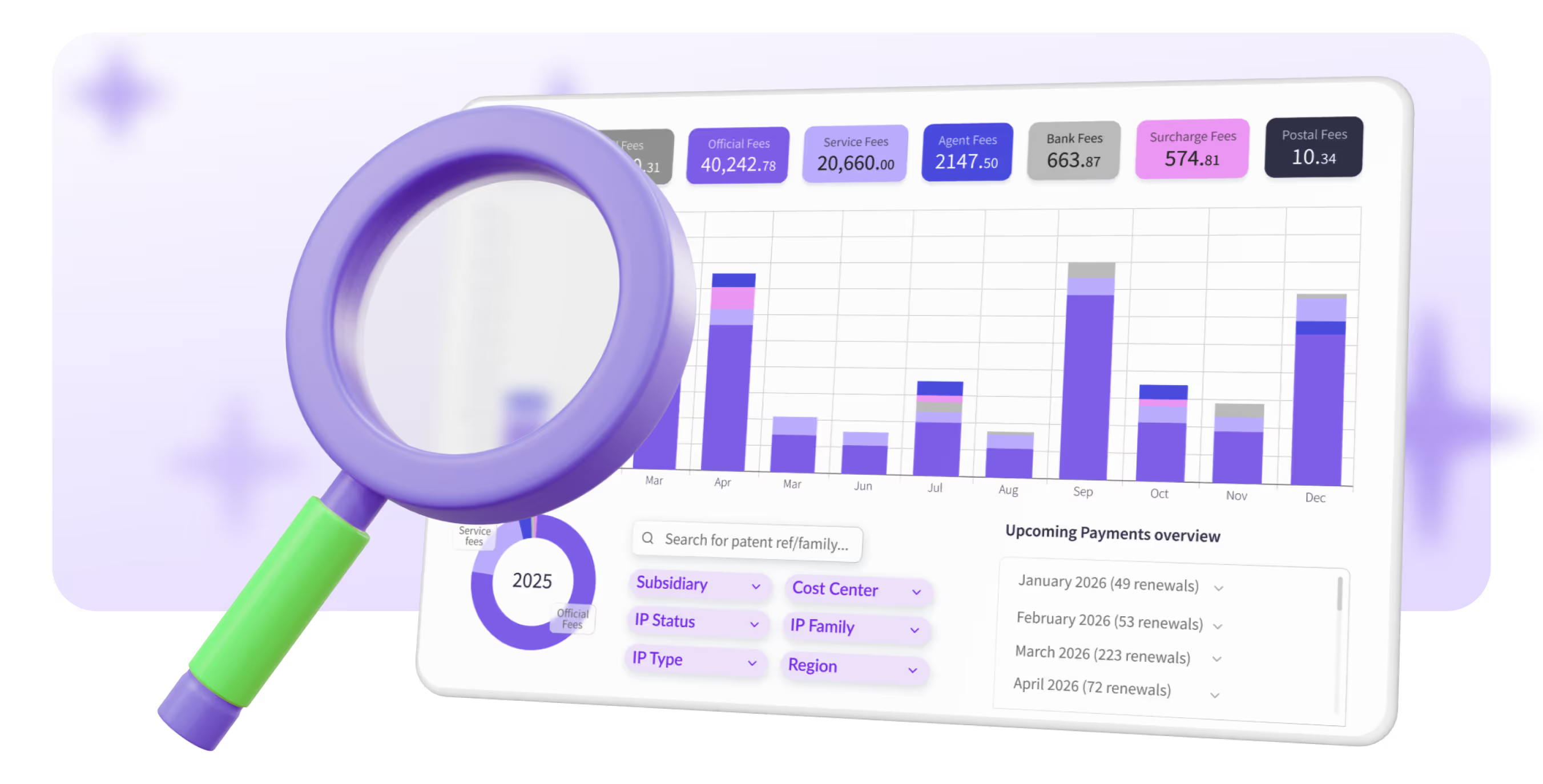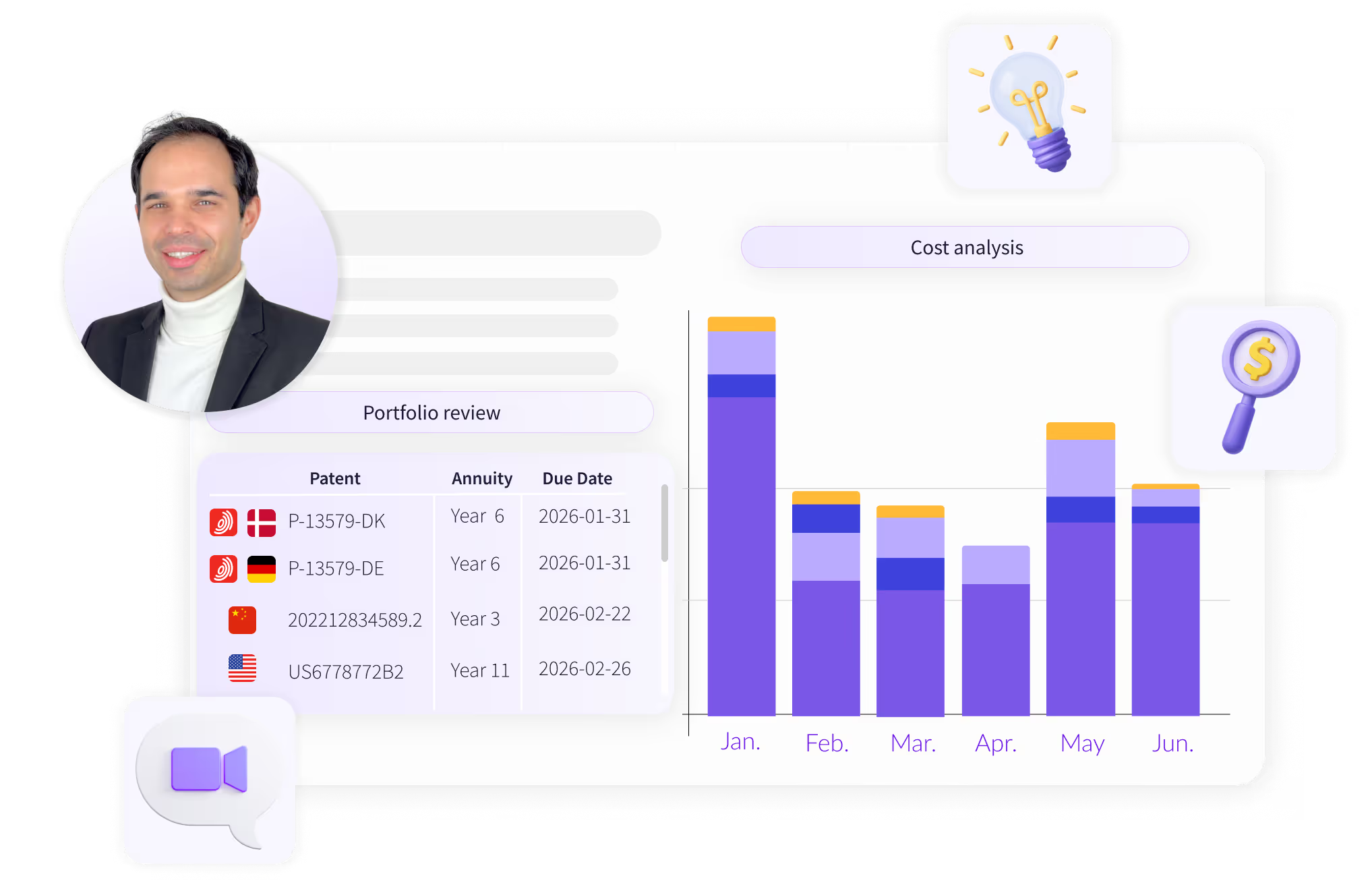TRY OUR NEW (FREE) IP RENEWAL COST CALCULATOR
Calculate
.png)
Most people think of a binary decision of “patents OR trade secrets”, or even worse the adversarial “patents VS. trade secrets”. This is overly simplistic and short-sighted, but this mindset has existed for decades unchecked.
Creative intellectual property attorneys can creatively combine “patents AND trade secrets” to provide a stronger, more holistic protection for their customers’ innovations.
In collaboration with Tangibly we explain how to combine patents and trade secrets for an optimized IP portfolio. Tangibly is a trade secret management platform that helps companies systematically identify, manage, and protect their trade secrets, turning a complex process into a streamlined and defensible strategy.
Both patents and trade secrets protect innovation but they do so in very different ways. A patent is a public right granted by a government that gives the inventor exclusive control over an invention for a limited period, usually 20 years from the filing date. In exchange, the inventor must fully disclose how the invention works so others can build upon it once the patent expires.
A trade secret, by contrast, has no expiration date. It protects confidential business information such as formulas, manufacturing methods, or algorithms that gives a company a competitive edge. However, trade secret protection lasts only as long as the information remains secret. Once it’s disclosed, the protection is lost.
The key difference? Patents are disclosed and time-limited, while trade secrets are confidential and indefinite. Many innovative companies use both strategically, depending on whether publicity or secrecy brings more value to the business.
Attorneys routinely combine other forms of intellectual property. For example, a patented product might have a registered trademark for the product’s commercial name, logo, or other mark indicating the source of the product. This is totally not controversial.
Similarly, a patented service might use a particular computer-administered software package that is also protected by software for the source code. Again, no arguments here on combining patents and another form of intellectual property.
This willingness to combine multiple forms of protection curiously vanishes when it comes to patents and trade secrets. Most people believe you can only pick one and are forever locked into that decision. It is almost as if they arrive at a fork in the road and have to choose between the ‘patent road’ or the ‘trade secret road.’ This mindset is simply false.
This fundamental misunderstanding stems from the patenting decision process itself. Once an innovation is made, it is typically written down and reported in the form of an “invention disclosure form”. The form varies somewhat from employer to employer but typically will include a description of the innovation (typically a product, method, or service), a listing of the inventors, potential commercialization pathways or licensing opportunities, any known prior art references, and so on.
Ironically, at this point, the innovation and the invention disclosure form are both trade secrets. Every patent begins life as a trade secret, which is why structured trade secret management platforms such as Tangibly are becoming critical.
The form is then sent to an invention review committee or individual to decide what to do with it. Here is where the trouble starts.
If the decision is made to seek patent protection, the invention disclosure form is used to draft a patent application to be filed with the patent office.
If the decision is made not to seek patent protection, the invention disclosure form is either considered rejected or is to be maintained as a trade secret. The problem is that in most organizations, this decision is the kiss of death.
Effectively, this review process decides between a patent OR trade secret. There is no possibility to combine both forms of IP.
Instead of deciding “Will I patent this or keep it a trade secret?”, I suggest deciding instead “Will I patent this or not?”. See the difference?
This decision leaves trade secret protection on the table, regardless of the patenting outcome. Here are several common scenarios where patents and trade secrets peacefully co-exist and create value together.
Absent a secrecy order or request for non-publication (see below), patent applications publish at 18 months after the first priority filing date. For that first 18 months however, the innovation is simultaneously patent pending and a trade secret. Of course, the patent owner or inventor can voluntarily choose to publish, present, offer for sale, or make other public disclosures after the filing date, but that is up to them. If they choose not to disclose, the technology will be on both the patent road and the trade secret road in parallel.
Part of the exchange a patent applicant makes with the government is to fully describe how to make or use the invention described in the patent claims (usually referred to as “enablement”). This disclosure is made in order to receive a limited monopoly for a specified amount of time (usually 20 years from the first non-provisional patent filing date, plus any patent term adjustments or patent term extensions). Some countries, such as the United States, require the applicant to disclose the “best mode”, essentially the best way of making or using the claimed invention.
A key detail to note is that these enablement and best mode requirements are as of the patent application’s filing date. There is no ongoing requirement, it is strictly as of that one single date.
Most inventors continue to work on their technology after the patent application is filed. There are very often additional improvements and optimizations that are discovered, all of which do not appear in the original patent application. These, by default, are all trade secrets because they did not appear in the published patent application. Improvements are very commonly made during scale-up, pilot plant operation, and clinical trials.
In situations where a method or process has multiple steps, it may be possible to patent key inventive steps while keeping earlier or later steps a trade secret. This isn’t always possible, but can be a very effective strategy in the right situation.
For example, preliminary processing steps can be maintained as a trade secret, while a key transformation is fully described (to meet any enablement and best mode requirements) in a patent application. These trade secret steps could include pre-conditioning, quality control / quality assurance metrics, raw input quality testing, and so on.
Similarly, post-processing of a partially finished product may be maintained as a trade secret. This could include product conditioning, quality control, aging tests, packaging, and other logistics details.
While not common, there are mechanisms for preventing the publication of patent applications at 18 months. In some situations, the patent applicant requests that their patent application not be published. In the US, this is done by filing a request for non-publication with the USPTO. In exchange for non-publication, the applicant agrees not to file the patent application in other countries. While this is a significant trade-off, it may be worthwhile in some situations.
Another situation is that the USPTO can place a secrecy order on the patent application, preventing publication. This is not common (has happened to me once in my entire career), but can be encountered in military, police, or other defense technologies. For example, inventions relating to missiles, satellites, munitions, tanks, submarines, sonar, or radar may unsurprisingly receive secrecy orders.
Our role as intellectual property attorneys is to help our clients make wise decisions that maximize value. Increasingly, that value comes from using patents and trade secrets together. It is truly a 1 + 1 = 3 scenario.
Managing both forms of IP effectively requires structure, documentation, and visibility. Trade secrets must be clearly identified, access should be restricted, and confidentiality agreements must be enforced across teams and partners. Meanwhile, patents need careful lifecycle management including renewals, fee tracking, and monitoring global protection deadlines.
By aligning patents with trade secret oversight, companies can ensure their entire IP portfolio both public and confidential is protected, cost-effective, and strategically optimized.
At PatentRenewal.com, we simplify IP protection by automating IP renewals across the globe. Discover how our streamlined solution helps you manage your IP renewals with transparency and ease.
Interested in a free IP renewal consultation? Benchmark your current IP renewal setup and costs against market standards.
